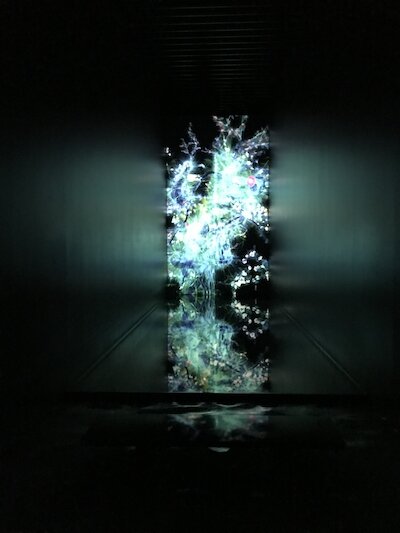If you’re into art and museums, you probably already have teamLab Borderless Tokyo on your radar. By art collective teamLab, Borderless offers “a world of artworks without boundaries”, allowing visitors to have an interactive experience instead of just being distant admirers. We’ve previously shared tips for a great experience when visiting Borderless, but did you know there is actually another museum by the same team in Tokyo?
A temporary exhibit originally slated to end its term in Autumn 2020, teamLab Planets TOKYO recently announced the extension of its term to the end of 2022 (with a new public outdoor artwork!). Read on to find out more about what to expect at this art museum.

“Floating in the Falling Universe of Flowers” lets you enter a space that is covered entirely in flowers. Sit, or even lie down to observe the flowers pass you by. Oddly therapeutic.
What’s at teamLab Planets TOKYO?
The best phrase to describe Planets is that it's “body immersive”. You’re in for an experience that's different from all other museums you've been to. With just seven indoor exhibits in four exhibition spaces, Planets presents not a plethora of static artworks, but ample space for you to fully immerse yourself into each piece of immersive art.
At “The Infinite Crystal Universe”, where the combination of lights and mirrors gives you infinite shot possibilities.
To be honest, having been to Borderless before Planets, a part of me thought I knew what to expect. After all, there are two exhibits — “The Infinite Crystal Universe” and “Expanding Three-Dimensional Existence in Transforming Space - Free Floating, 12 Colors” — which are quite similar to the ones at Borderless. But I was wrong. While the experience for these two exhibits was not drastically different from the one I had with their counterparts at Borderless, each exhibit was a lot bigger, and I appreciated having the extra space to properly take in the experience.
As with Borderless, the artworks at Planets interact with the visitors, which means every experience is unique — you can use the teamLab app to change the colours of the lights, or just let yourself sink into the “Soft Black Hole - Your Body Becomes a Space that Influences Another Body” to feel how your every movement affects the artwork, as well as the visitors around you.

Artwork - “Cold Life”
A personal favourite of mine is “Cold Life”, a digital work that first starts off with a calligraphy of the Chinese/Japanese character for “life”, slowly transforming into a tree, from which more life forms proceed to grow. Tucked away at a corner of the same space as “Drawing on the Water Surface Created by the Dance of Koi and People - Infinity”, “Cold Life” is probably the smallest exhibit in the entire museum. If you’re lucky enough to be able to have the space to yourself, you could make yourself comfortable at the small bench available before the artwork, and watch the full video while thinking about how life is interconnected in more ways than we can imagine.



 "Drawing on the Water Surface Created by the Dance of Koi and People - Infinity", 2016-2018, Interactive Digital Installation, Endless, Sound: Hideaki Takashi © teamLab. (Photo from: teamLab)
"Drawing on the Water Surface Created by the Dance of Koi and People - Infinity", 2016-2018, Interactive Digital Installation, Endless, Sound: Hideaki Takashi © teamLab. (Photo from: teamLab)